The Dolpo Trek invites adventurers to explore the heart of local Tibetan culture, where each step reveals vibrant traditions and customs. As trekkers traverse breathtaking landscapes, they engage with villagers who embody a way of life steeped in history. They’ll witness celebrations like Lhosar, share meals, and visit ancient monasteries, all while fostering a deeper connection with the community. However, the trek offers more than picturesque views; it poses intriguing questions about heritage and modernity that travelers often ponder long after their journey ends. What stories will unfold in this remote corner of the world?
Key Points
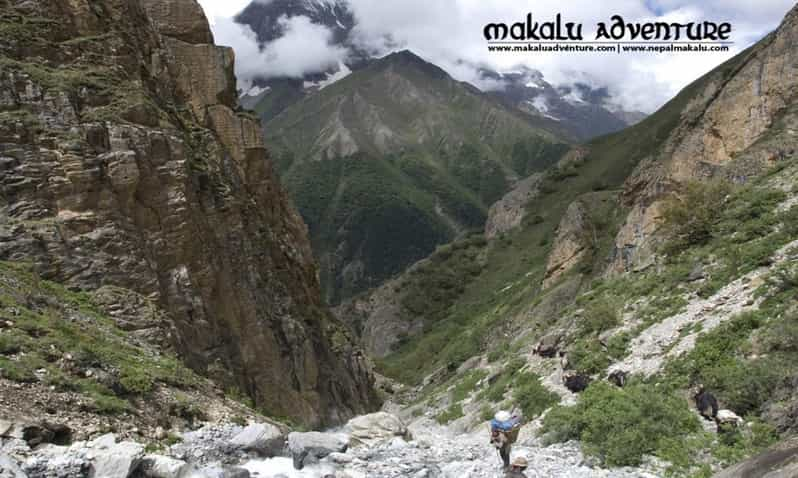
- Engage with local villagers to learn about traditional lifestyles and agricultural practices during the trek through the Dolpo region.
- Experience vibrant festivals like Lhosar, celebrating Tibetan New Year with music, dance, and cultural rituals.
- Explore ancient monasteries, gaining insights into Tibetan Buddhism and its influence on local customs and traditions.
- Participate in daily activities, such as meals and crafts, fostering a deeper understanding of the community’s way of life.
- Support local artisans by purchasing handmade crafts, which helps sustain traditional art forms like thangka paintings and wool weaving.
Trek Overview and Highlights
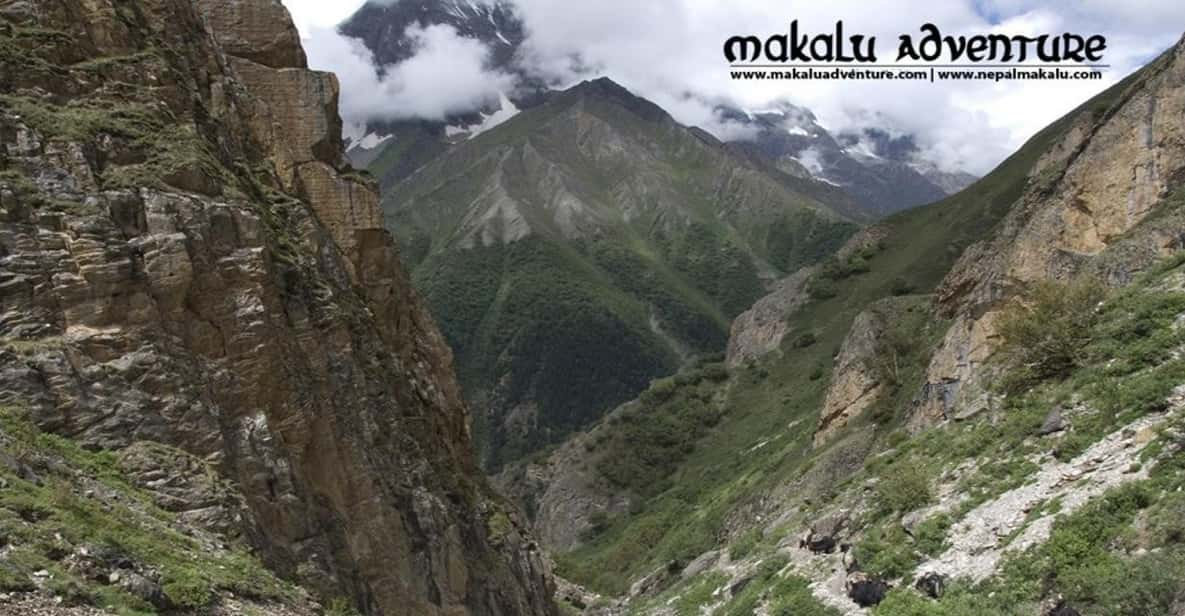
The Dolpo Trek offers adventurers a remarkable 18-day journey through Nepal’s stunning Dolpa region, showcasing breathtaking landscapes and rich cultural experiences.
This remote and challenging route leads trekkers through the picturesque Tinje and Sinjha valleys, culminating at Phoksundo Lake, the deepest lake in Nepal. Along the way, they’ll encounter diverse terrains, from lush forests to barren deserts, and traverse high mountain passes.
The trek highlights serene alpine lakes and traditional Tibetan villages, providing stunning views of the rugged Himalayan mountains.
Adventurers will also have the chance to explore ancient monasteries, witness yaks grazing, and enjoy the region’s unique natural beauty.
Each step unveils the Dolpa region’s untouched charm and captivating scenery.
Local Culture and Traditions
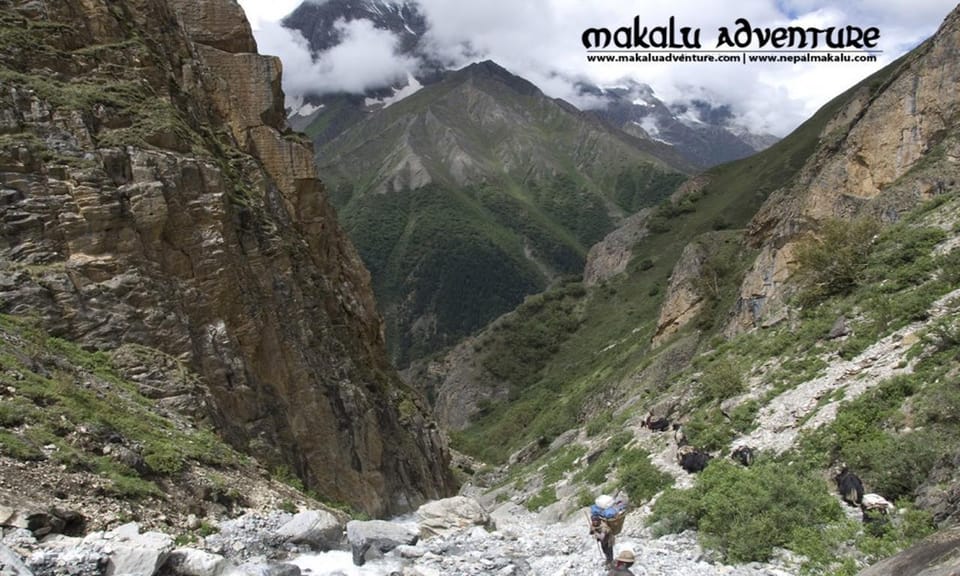
Inhabitants of the Dolpo region proudly maintain their rich cultural heritage, showcasing a blend of Tibetan influences and traditional practices that have thrived in this remote area for centuries.
Their daily lives revolve around agriculture, animal husbandry, and the help of yaks, which are integral to their economy and culture.
Festivals like Lhosar, celebrating the Tibetan New Year, highlight their vibrant customs, filled with traditional music, dance, and communal feasts.
Spirituality plays a significant role, with ancient monasteries dotting the landscape, where locals engage in rituals and teachings of Buddhism.
Through art and craftsmanship, such as intricate thangka paintings and traditional wool weaving, Dolpo’s people express their deep-rooted beliefs, ensuring that their unique culture endures for future generations.
Unique Experiences Along the Trek
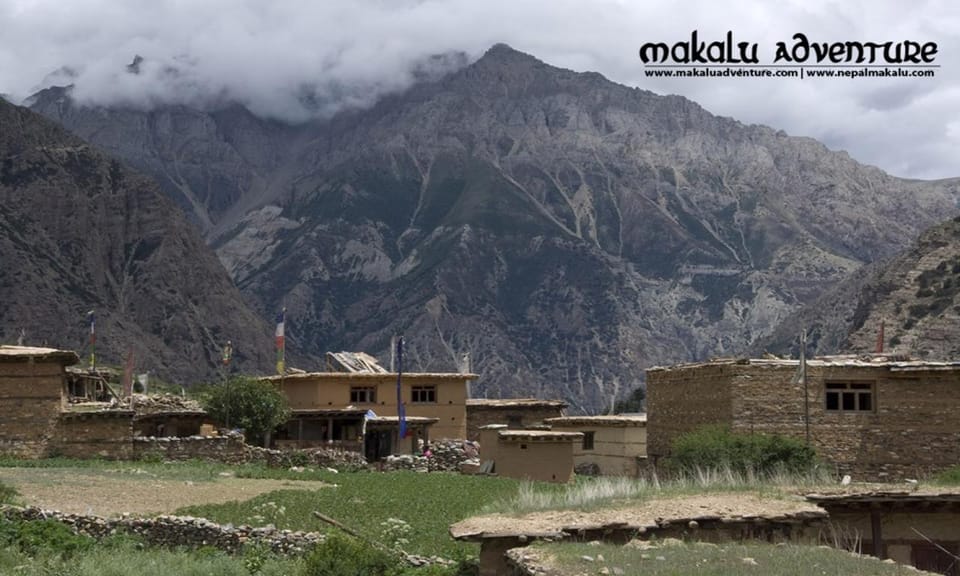
Experiencing the breathtaking beauty of the Dolpo region, trekkers encounter a diverse array of landscapes, from towering Himalayan peaks to serene alpine lakes, each step revealing the unique charm of this remote destination.
Along the trek, adventurers can enjoy unforgettable experiences that highlight the area’s rich culture and stunning scenery.
-
Interacting with local villagers and learning about their traditional lifestyles.
-
Witnessing the vibrant festivals that celebrate age-old customs and beliefs.
-
Exploring ancient monasteries that offer insight into Tibetan Buddhism.
These unique experiences not only enhance the trek but also create lasting memories, making Dolpo a truly remarkable destination for those seeking adventure and cultural enrichment.
Accommodations During the Journey
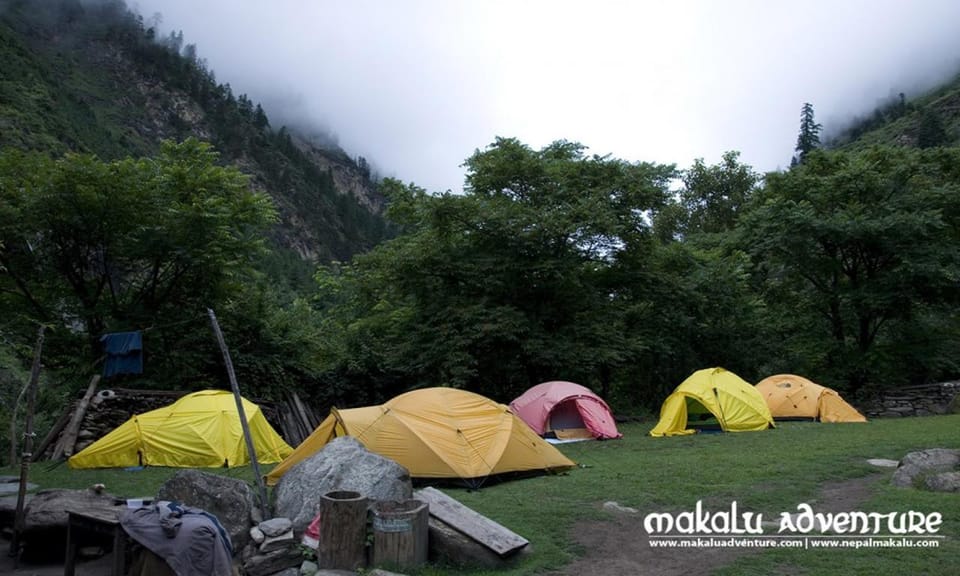
Accommodations during the Dolpo Trek are thoughtfully arranged to provide trekkers with comfort and convenience while immersing them in the stunning natural surroundings. Trekkers can expect a mix of cozy tea houses and fully organized camping setups, allowing them to experience local culture intimately.
| Accommodation Type | Description |
|---|---|
| Tea Houses | Simple lodgings with local charm, offering basic amenities and meals. |
| Camping | Tents set up in scenic spots, with meals prepared by experienced cooks. |
| Shared Facilities | Communal dining areas and shared restrooms, fostering a sense of community. |
| Scenic Views | Every accommodation provides breathtaking views of the Himalayas. |
This carefully curated experience ensures that trekkers can enjoy their journey without sacrificing comfort.
Pricing and Booking Process
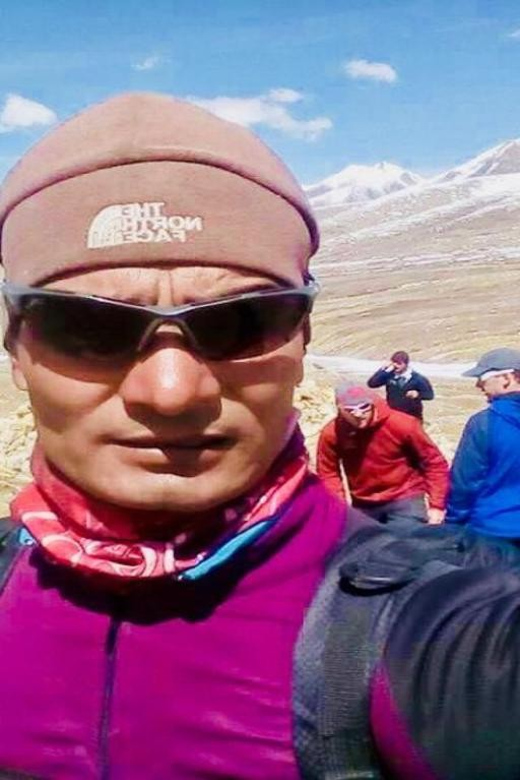
Trekking in Dolpo isn’t only about the stunning landscapes and cultural encounters; it’s also important to understand the pricing and booking process to ensure a seamless adventure. The trek starts at $2,750 per person, making it an investment in a unique experience.
Here are key points to consider:
-
Flexible Booking: Reserve now and pay later, with no upfront payment required.
-
Free Cancellation: Enjoy a full refund if canceled up to 24 hours in advance.
-
Small Group Size: Treks are limited to 10 participants, ensuring a more personalized experience.
Essential Gear and Packing Tips
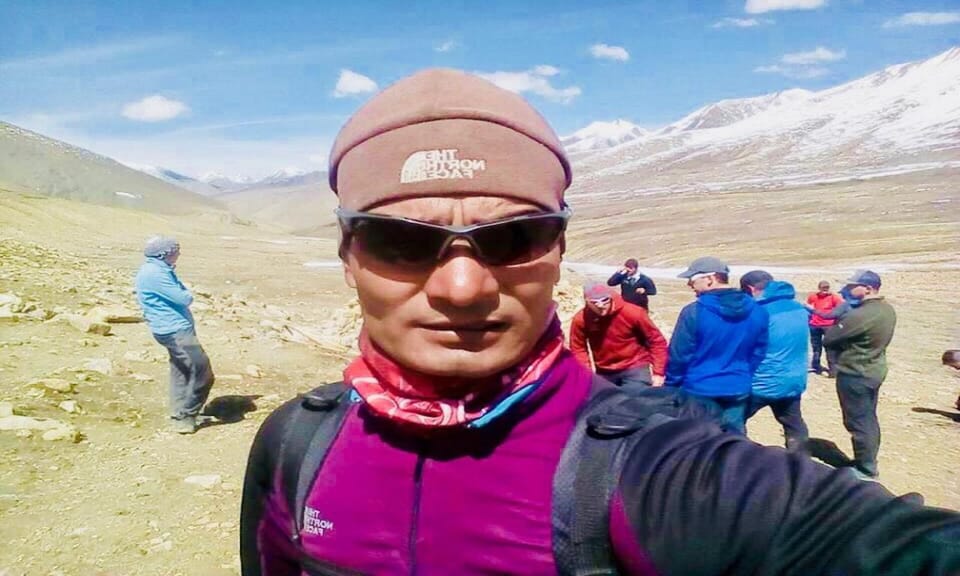
Packing the right gear is essential for a successful Dolpo Trek, ensuring comfort and safety throughout the journey.
Trekking boots with good ankle support are crucial for navigating rugged terrains.
Layered clothing, including moisture-wicking base layers, insulation, and waterproof outer layers, keeps trekkers warm and dry in varying weather conditions.
A reliable sleeping bag rated for cold temperatures and a lightweight tent enhance the camping experience.
Essential items include a durable backpack, trekking poles for stability, and a first aid kit.
Don’t forget sun protection—sunglasses, sunscreen, and a hat are must-haves.
Lastly, pack enough high-energy snacks to fuel those long days on the trail.
With the right gear, trekkers can focus on the breathtaking beauty of Dolpo.
Health and Safety Considerations
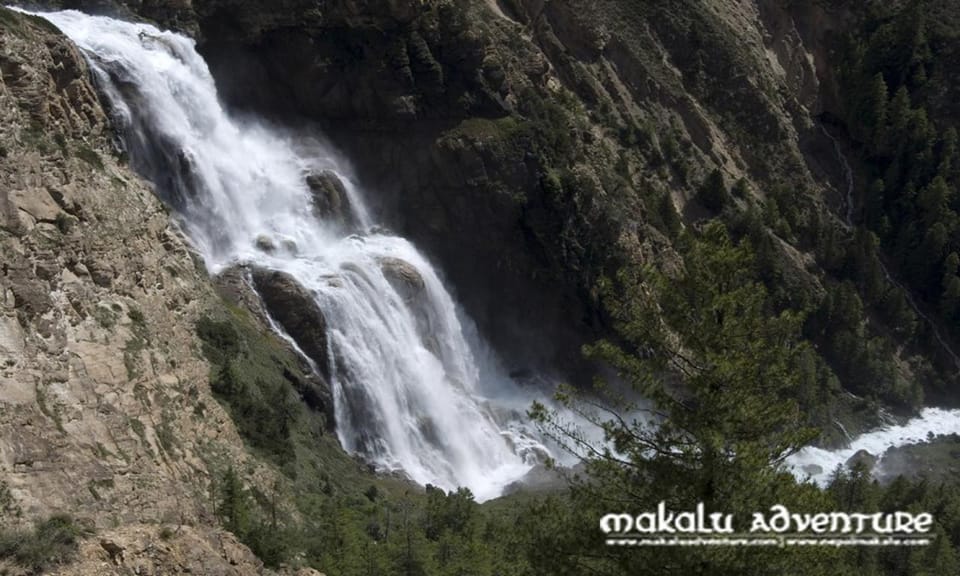
When preparing for the Dolpo Trek, trekkers should prioritize health and safety considerations to ensure a safe and enjoyable experience in the remote Himalayan landscape.
Understanding the unique challenges of high-altitude trekking is crucial. Trekkers must take proactive measures to stay healthy and safe, including:
-
Acclimatization: Gradually ascend to allow the body to adjust to higher altitudes, reducing the risk of altitude sickness.
-
Hydration: Drink plenty of water to stay hydrated, especially in the dry, high-altitude environment.
-
Travel Insurance: Obtain comprehensive insurance that covers trekking and emergency evacuations.
Engaging With Local Communities
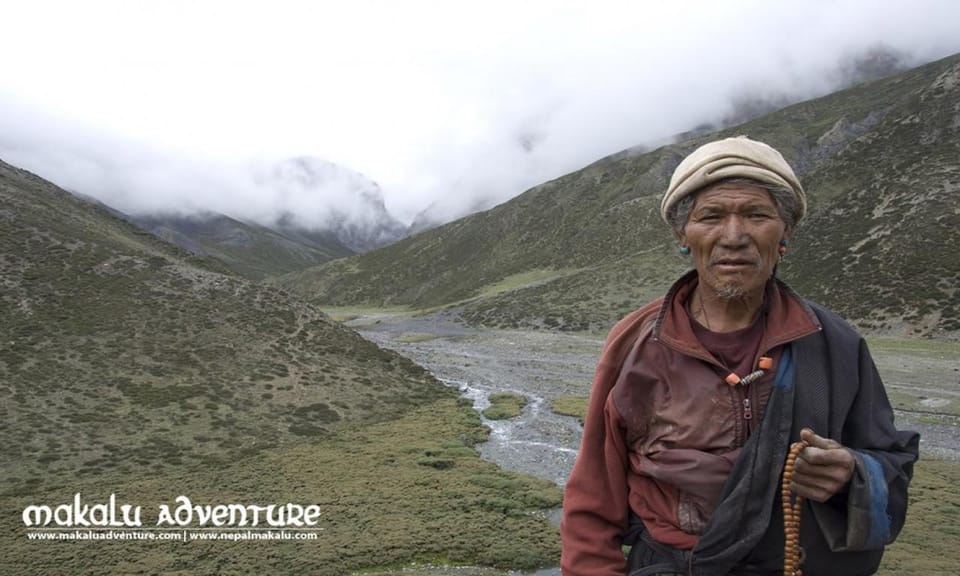
Engaging with local communities along the Dolpo Trek enriches the experience, allowing trekkers to enjoy the vibrant culture and traditions of the Himalayan region.
Trekkers often find themselves welcomed into traditional Tibetan villages, where they can participate in daily activities, share meals, and learn about ancient customs. These interactions foster a deeper understanding of local life, from the significance of agriculture to the role of Buddhism in the community.
Visitors can also witness colorful festivals, such as the Dumji Festival, celebrating the local deities. By supporting local artisans and purchasing handmade crafts, trekkers contribute to the economy while taking home unique souvenirs.
Ultimately, these connections create lasting memories and a profound appreciation for Dolpo’s rich cultural heritage.
Frequently Asked Questions
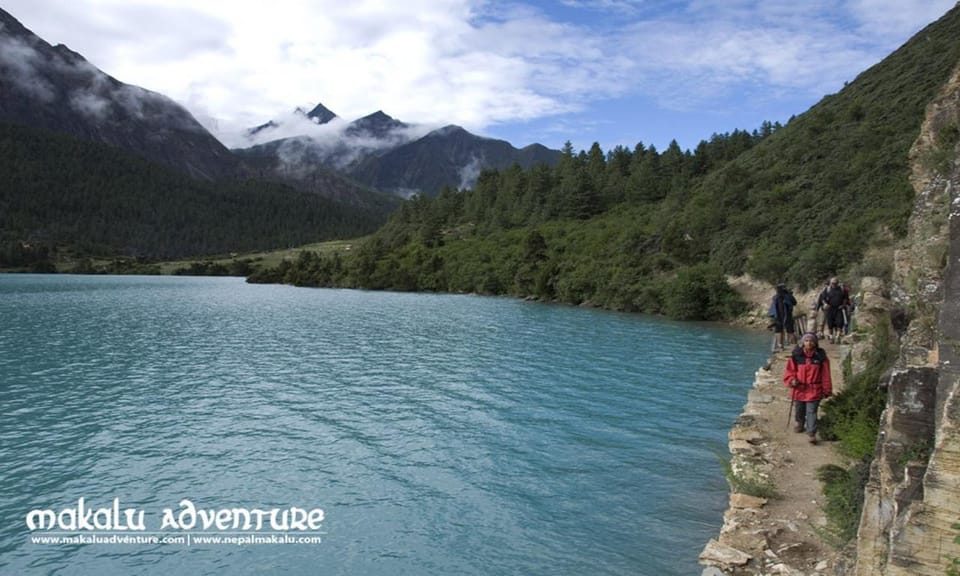
What Is the Best Time of Year for the Dolpo Trek?
The best time for the Dolpo Trek is typically from late spring to early autumn, when weather conditions are favorable. During these months, trekkers can enjoy clear skies, stunning views, and milder temperatures.
Are There Any Age Restrictions for Participants on the Trek?
There aren’t strict age restrictions for participants on the trek, but individuals should possess adequate fitness levels. The trek’s challenging nature means younger trekkers often fare better than older participants with mobility or health issues.
How Is Waste Management Handled During the Trek?
During the trek, the team prioritizes waste management by encouraging participants to pack out their trash. They provide designated disposal bags and educate trekkers on minimizing environmental impact, ensuring a cleaner, more sustainable journey through the mountains.
Can Trekkers Communicate With Locals in English?
Trekkers can often communicate with locals in English, as many villagers understand basic phrases. However, knowledge may vary, so learning a few local words can enhance interactions and foster deeper connections during the journey.
Are There Opportunities to Volunteer During the Trek?
During the trek, opportunities to volunteer arise organically. Participants often engage with local communities, helping with tasks or sharing skills. This fosters connections and enriches their experience while contributing positively to the region’s culture and development.
Not for you? Here's more of our most recent tour reviews happening neaby
Recap
The Dolpo Trek offers adventurers a chance to connect deeply with the local Tibetan culture, making it more than just a journey through stunning landscapes.
By engaging with vibrant communities, celebrating traditions like Lhosar, and exploring ancient monasteries, trekkers leave with unforgettable memories and a profound appreciation for the region’s heritage.
As they share meals and stories with locals, they not only witness but also become part of a rich tapestry of life that thrives in the heart of Dolpo.
